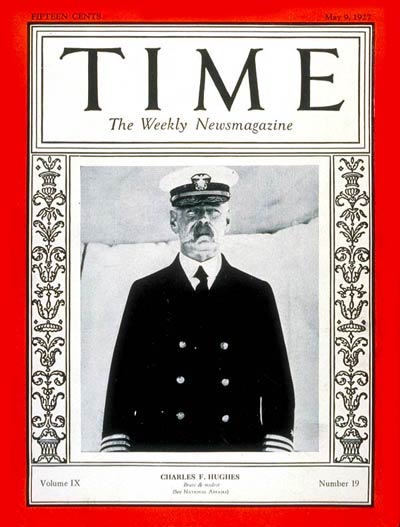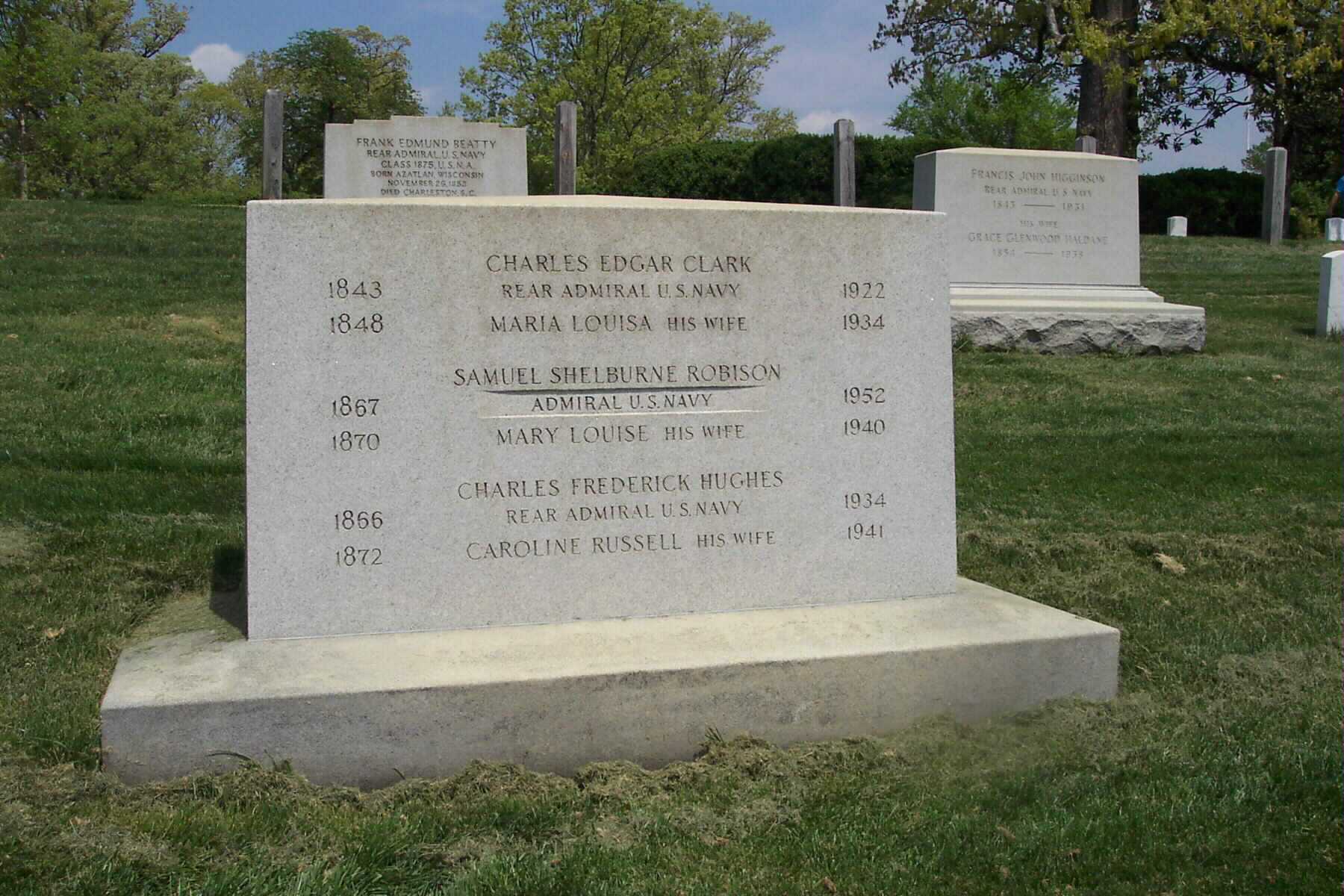Charles Frederick Hughes (14 October 1866–28 May 1934) was an Admiral in the United States Navy and served as Chief of Naval Operations.
Born in Bath, Maine, Hughes was appointed to the Naval Academy in 1884. Upon graduation on 8 June 1888, he went to the Fleet for the customary two years at sea preceding a commission as an ensign. He received that commission on 1 July 1890, and his promotion to Lieutenant (junior grade) came on 27 April 1898. During the Spanish-American War, Lieutenant (jg.) Hughes fought in Commodore Dewey’s Asiatic Squadron. He made Lieutenant on 3 March 1899. While serving ashore at the Bureau of Equipment from 1904 to 1906, he became Lieutenant Commander Hughes on 1 July 1905. During a tour of duty as recorder for the Board of Inspection and Survey between 1909 and 1911, he received his promotion to Commander.
He assumed command of Birmingham (Scout Cruiser No. 2) in 1911 and plied the troubled waters along the Mexican gulf coast in her and, later, in command of Des Moines (Cruiser No. 15). In 1913, Comdr. Hughes became chief of staff to the Commander, Atlantic Fleet, and served in that capacity during the occupation of Veracruz, Veracruz, Mexico, in the spring of 1914. Promoted to captain on 10 July 1914, he returned to shore duty later that year to serve with the General Board. Capt. Hughes took command of New York (Battleship No. 34) in October of 1916. His ship served in the American battleship squadron that operated with the Royal Navy’s Grand Fleet at Scapa Flow in the Orkney Islands through World War I.
Hughes, however, left New York just before the Armistice. On 10 October 1918, he was promoted to Rear Admiral. His first assignment as a flag officer was as commandant at the Philadelphia Navy Yard from late 1918 to 1920. Between 1920 and 1921, Rear Admiral Hughes was Commander, 2d Battleship Squadron, Atlantic Fleet. From the latter part of 1921 to 25 June 1923, he commanded Divisions 7 and 4 of the Battle Fleet. Coming ashore again in 1923, he became President of the Naval War College at Newport, Rhode Island, on 1 July. A year later, Rear Admiral Hughes moved to the job of Director of Fleet Training.
That assignment lasted until 10 October 1925. Soon thereafter, Hughes was appointed Commander in Chief, Battle Fleet. On 14 November 1927, Admiral Hughes became the fourth man to occupy the office of Chief of Naval Operations. He completed his tour of duty in that post on 11 September 1930 and, on 14 October 1930, retired to his home in Chevy Chase, Maryland, where he died.
Admiral Hughes is buried in Arlington National Cemetery with his father-in-law, Charles Edgar Clark, Rear Admiral, United States Navy, and his brother-in-law, Samuel Shelburne Robison, Admiral, United States Navy, and his wife Caroline Russell Hughes.
- HUGHES, CHARLES FREDERICK
- ADMIRAL U S NAVY RETIRED
- DATE OF DEATH: 05/28/1934
- BURIED AT: SECTION EAST SITE 891
- ARLINGTON NATIONAL CEMETERY
- HUGHES, CAROLINE R W/O CHARLES FREDERICK
- DATE OF DEATH: 10/19/1941
- BURIED AT: SECTION EAST SITE 891
- ARLINGTON NATIONAL CEMETERY
- WIFE OF CF HUGHES, ADM, USN
Michael Robert Patterson was born in Arlington and is the son of a former officer of the US Army. So it was no wonder that sooner or later his interests drew him to American history and especially to American military history. Many of his articles can be found on renowned portals like the New York Times, Washingtonpost or Wikipedia.
Reviewed by: Michael Howard


